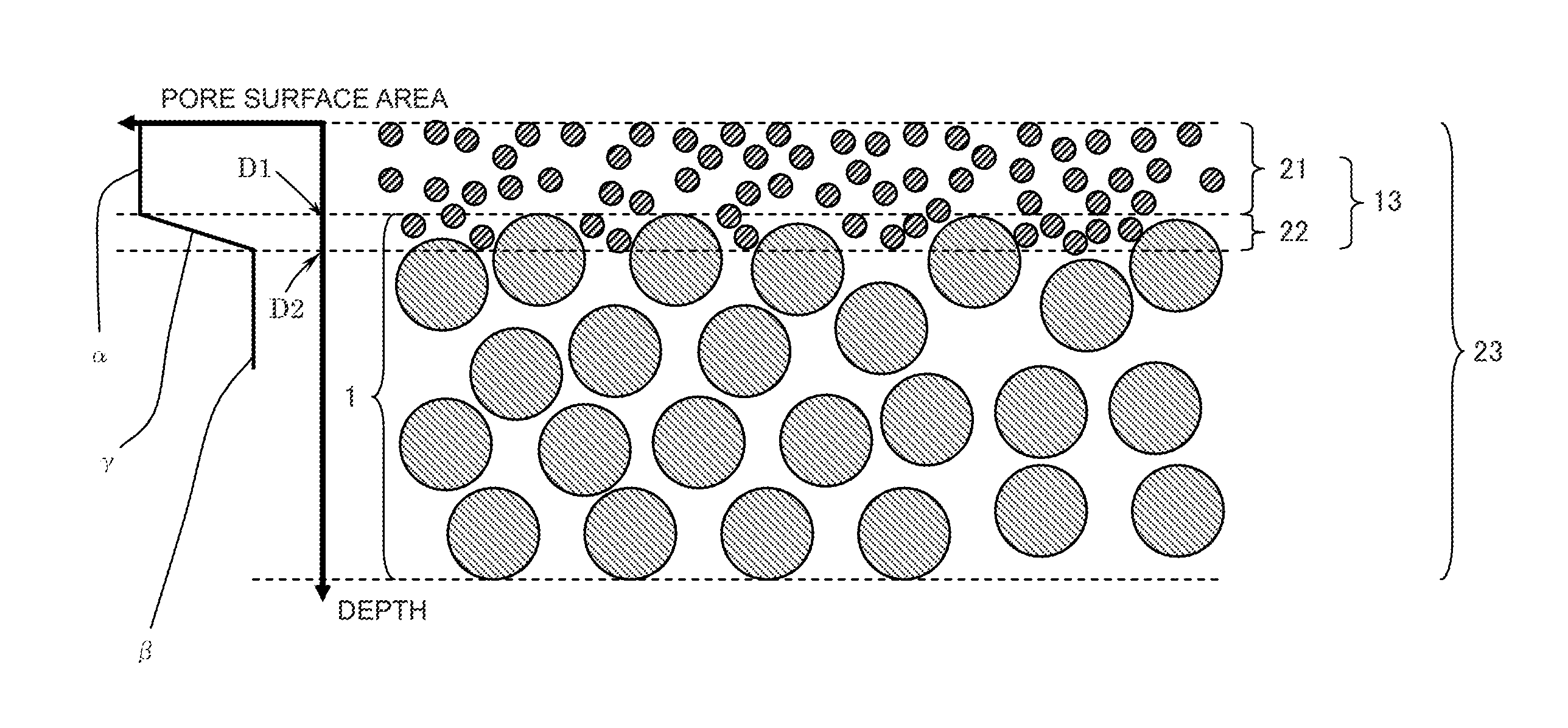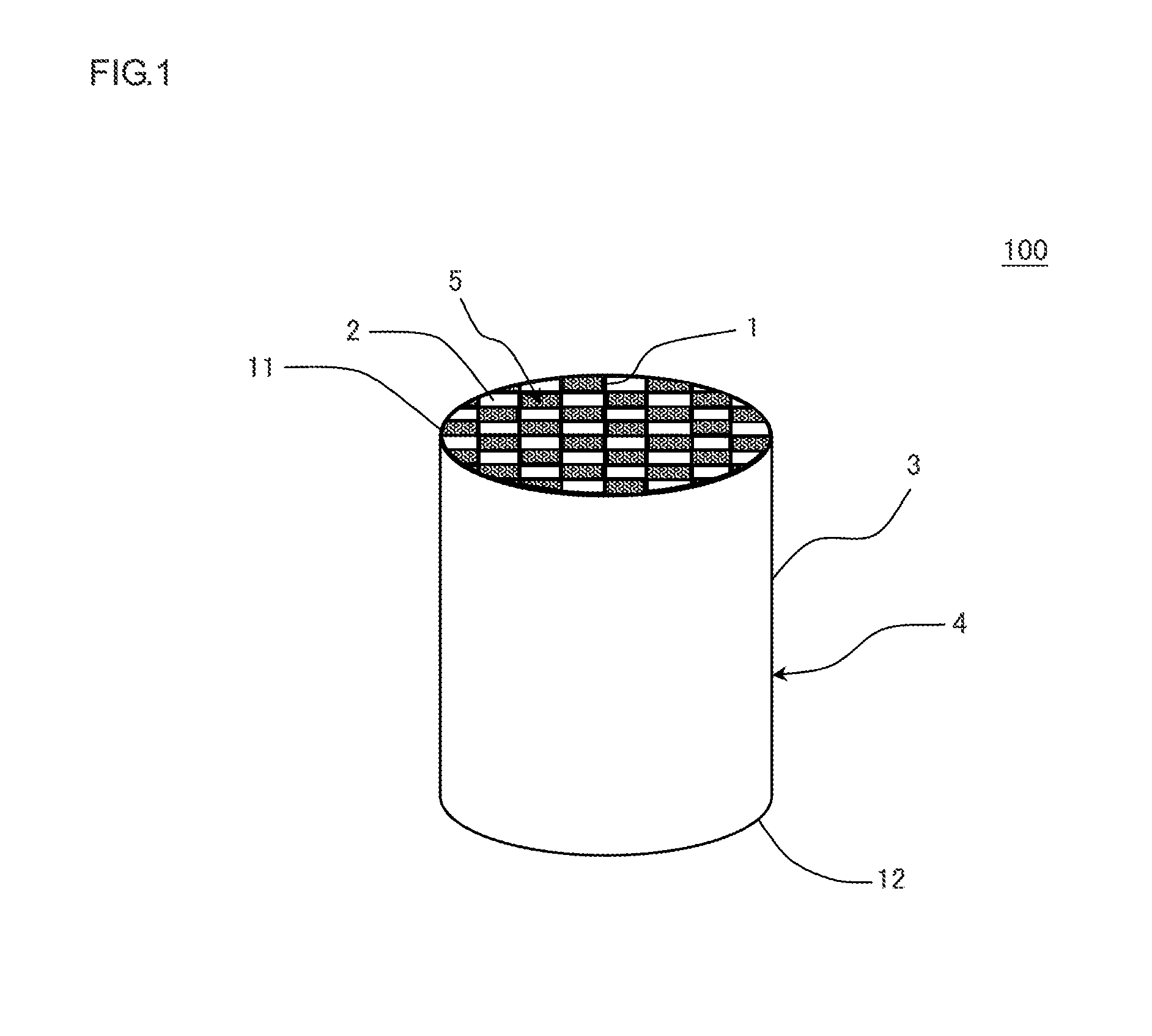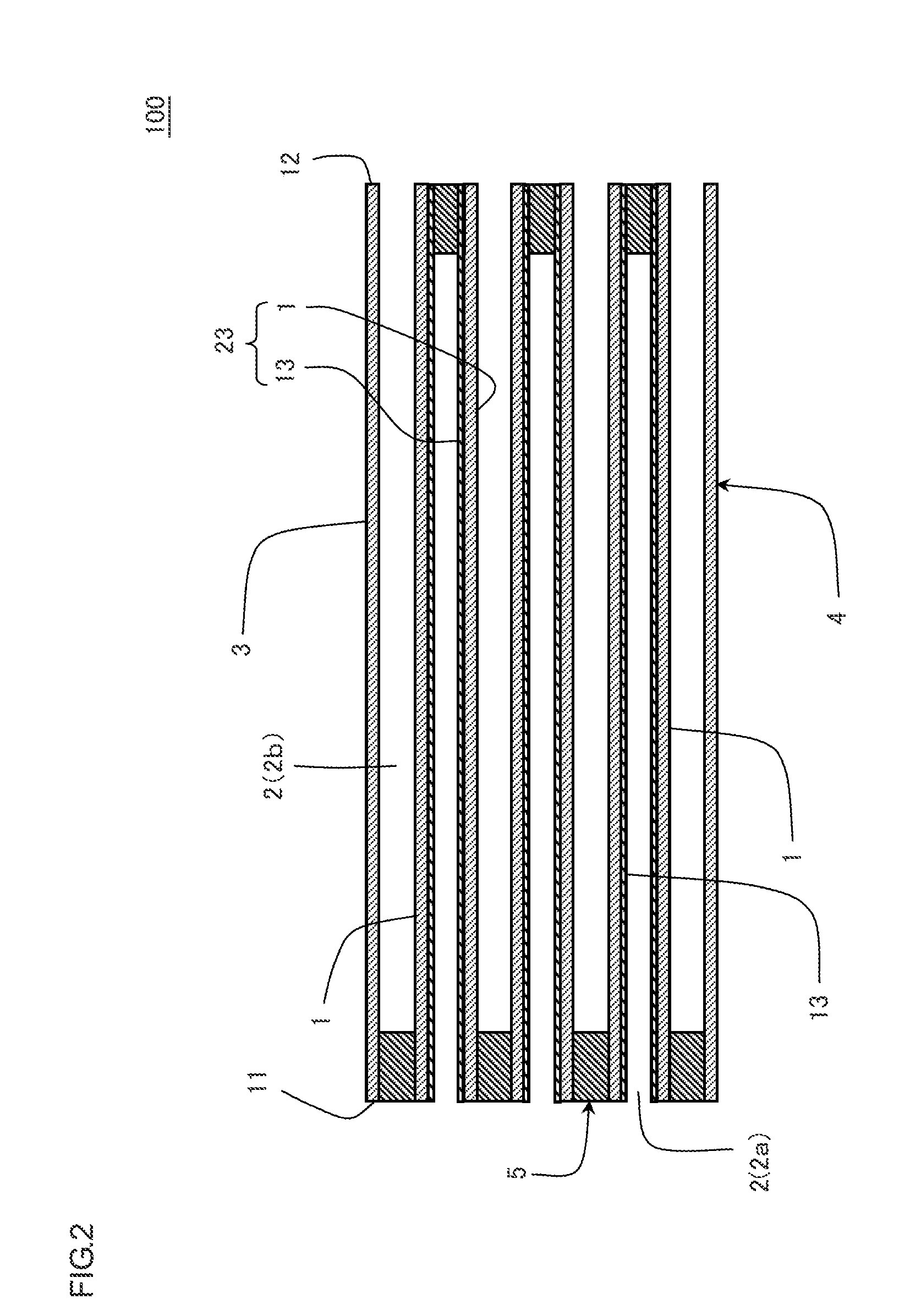Honeycomb structure and manufacturing method of the same
a technology of honeycomb and manufacturing method, which is applied in the field of honeycomb structure, can solve the problems of difficult to secure suppress penetration amount, difficult to form an even thickness of the collecting layer, etc., and achieve the effect of raising the initial collecting efficiency, suppressing the increase of initial pressure loss, and increasing melting poin
- Summary
- Abstract
- Description
- Claims
- Application Information
AI Technical Summary
Benefits of technology
Problems solved by technology
Method used
Image
Examples
example 1
[0124]As a ceramic raw material, a cordierite forming raw material (talc, kaolin and alumina) was used. A mass ratio of talc, kaolin and alumina was a mass ratio at which cordierite was obtained after firing. In 100 parts by mass of the ceramic raw material, 4 parts by mass of binder (methylcellulose) and 35 parts by mass of water were mixed to obtain a ceramic forming raw material. The obtained ceramic forming raw material was kneaded by using a kneader, to obtain a kneaded material. The obtained kneaded material was extruded by using a vacuum extrusion-forming machine, to obtain a honeycomb formed body. In the obtained honeycomb formed body, a thickness of a partition wall parent material was 300 μm, a cell density was 48 cells / cm2, and the whole shape was a cylindrical shape (a diameter of an end surface was 40 mm, and a length in a cell extending direction was 100 mm). As a cell shape, a shape orthogonal to the cell extending direction was a square. The obtained honeycomb formed...
examples 2 to 7 and 9 to 17
[0154]In the same manner as in Example 1, honeycomb formed bodies were prepared and dried. Then, collecting layer forming raw materials were prepared on conditions shown in Table 5. Afterward, honeycomb structures were obtained in the same manner as in Example 1. Here, as “polystyrene sulfonate” of “viscosity regulator” of Table 5, Chemistat SA-136 (trade name) manufactured by Sanyo Chemical Co. was used. Moreover, A-60 (trade name) manufactured by Kao Corp. was used as “polyoxyethylene distyrenated phenyl ether”. Moreover, “cellulose” was a micro cellulose fiber (trade name: Celish manufactured by Daicel Corp.) having an average fiber diameter (a length of a short diameter) of 0.1 μm. This micro cellulose fiber (the micro organic fiber) is insoluble in water. Evaluations were performed in the same manner as in Example 1. Moreover, “a volume percentage of (1)+(2)” in Table 5 means a percentage of a total of a volume of the ceramic raw material for the collecting layer and a volume o...
example 8
[0159]A honeycomb structure was prepared in the same manner as in Example 1 except that PMMA having an average particle diameter of 60 μm was further added to a ceramic forming raw material. It is to be noted that a content of PMMA in the ceramic forming raw material was 10 mass %. Evaluations were performed in the same manner as in Example 1. The results are shown in Table 2.
PUM
| Property | Measurement | Unit |
|---|---|---|
| thickness | aaaaa | aaaaa |
| porosity | aaaaa | aaaaa |
| porosity | aaaaa | aaaaa |
Abstract
Description
Claims
Application Information
 Login to View More
Login to View More - R&D
- Intellectual Property
- Life Sciences
- Materials
- Tech Scout
- Unparalleled Data Quality
- Higher Quality Content
- 60% Fewer Hallucinations
Browse by: Latest US Patents, China's latest patents, Technical Efficacy Thesaurus, Application Domain, Technology Topic, Popular Technical Reports.
© 2025 PatSnap. All rights reserved.Legal|Privacy policy|Modern Slavery Act Transparency Statement|Sitemap|About US| Contact US: help@patsnap.com



